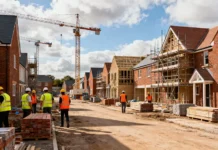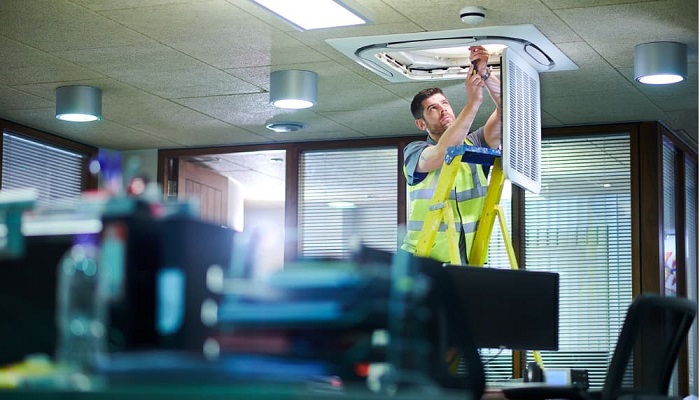The allure of commercial property investment is the steady revenue and scalability it offers entrepreneurs and organizations to need for their businesses. But, before any consideration of a property can take place, its condition and curb appeal will be closely scrutinized. This is why property managers need to prioritize routine maintenance to keep their buildings and grounds from looking outdated and run down. Care and repair of property features also reduce liability risks that could dissuade investors and tenants from buying or leasing this space.
If you’re new to commercial property management and need clarification on what maintenance entails, this guide will provide you with a quick rundown of the essentials.
Deciding Who Handles Commercial Property Maintenance Needs
The responsibility of keeping a property in great condition generally falls on the owner’s shoulders. Of course, this doesn’t mean you have to pick up a paint bucket and start repainting your parking lot curbs. You have several options for delegating the many maintenance demands that come with commercial buildings and their surrounding grounds.
The DIY Approach
If this is your first commercial property, but your budget is limited, or the grounds need to be more expansive, you could handle some of the work yourself. This saves money initially and helps you become deeply familiar with your building and its quirks. Of course, for skilled repairs involving HVAC systems or electrical, hire professionals for those instances.
Contract with a Commercial Maintenance Company
For commercial real estate owners that have the means, hiring a third-party maintenance service is a worthwhile investment. Not only will they be able to handle a broad scope of services, but this frees up your time to focus on more important business, like attracting new tenants.
Make Maintenance the Tenant’s Responsibility
If you want to avoid any part of the maintenance responsibilities, you can always require your tenants to handle it. This is usually done through a clause in their commercial lease but does come with some risk to your property. For example, they may need to be more attentive to slow leaks in a breakroom that causes serious mold issues throughout your building. Unfortunately, it’s common for these problems to go unnoticed after the tenant vacates, leaving the owner to foot the repair costs.
Best Practices for Keeping Your Commercial Property Looking Sharp
Now that you understand your options for delegating maintenance work, let’s look at a few ways to ensure your property stays appealing and in tip-top shape:
Always Find Ways to Improve Your Property
While it’s important to ensure your property is always in compliance with local building codes, it’s really on you to make it attractive to potential tenants, investors, and buyers. It is optional to install new carpeting every year or replace lighting fixtures every time a new trend takes commercial property
Prospective tenants and buyers appreciate properties that are regularly maintained and upgraded. This effort builds confidence in the relationship they can expect with their property managers. Plus, their clientele will also be impressed with their location and develop a positive impression of their business.
The important thing to remember is that any changes that get made are done right. Always work with professionals who know how to perform the work necessary. For example, hire experienced plumbers to install new sinks throughout your building and work with a reputable commercial paving company when expanding your parking lot or installing new walkways. Working with unlicensed contractors is risky business and could cost you thousands later if you need to hire a different company to fix their mistakes.
Don’t Underestimate the Impact of Mother Nature on Your Property
When you think about how weather events could cause damage to your property, you probably imagine severe thunderstorms, flooding, fires, and tornadoes. Serious destruction to buildings and their surrounding grounds isn’t uncommon when these situations arise, but you can be ready ahead of time so that the damage caused won’t have as much of an impact.
You should create a disaster recovery plan that outlines step by step how your maintenance team will handle the aftermath of a destructive storm. This document should also have all the contact numbers for the different services you rely on for things like landscaping, pavement repairs, communication disruptions, power outages, etc. Having this strategy prepared will also ensure minimal disruption to your tenants’ businesses so they can recover sooner, too.
Another aspect of weather-related maintenance is it’s only sometimes violent storms that can damage your commercial property. Everyday weather like snow, extreme heat, and flooding can impact the surface and stability of your sidewalks and parking lots.
Don’t Procrastinate Needed Repairs
Property owners and managers have a lot on their plates every day. From customers and tenant demands to track operational costs, it’s easy to procrastinate seemingly minor repairs. Unfortunately, the reality is that the longer you wait, the more damage gets worse. Also, by not dealing with maintenance issues right away, the little things grow in number and quickly become an overwhelming game of catch-up. Your tenants will also notice this and lose confidence in your commitment to providing them with a business space to be proud of.
Your Landscaping Impacts Curb Appeal
First impressions are everything, and It’s not just the features and interior design of your commercial building that attracts potential customers when first arriving at your location. The surrounding grounds and entranceway set the scene and need professional landscaping to create an attractive curb appeal that inspires visitors.
A great place to start is designing a few well-placed flower beds and trees to add to your building’s overall appearance. Then, work with your grounds crew to find ways to obscure these zones from view if you have areas prone to water pooling after heavy rain. Often a few shrubberies along a mulched ridge can do the trick.
Secure Your Building
Vandalism and break-ins are a challenge for commercial property owners and their tenants. To reduce the risk of these incidents, at a minimum, install a digital security system that offers live streaming and recording capabilities. Smaller properties may not warrant having a security guard present, but having a system in place that you can access from your smartphone, desktop, or tablet will prove invaluable.
You can also add additional deterrents like strategically placed lighting around the parameter of your building and parking lots. Door locks that automatically lock after a specific hour or required badge or keyed entry are also affordable security tools that can further ensure the safety of your customers.
Finally, make sure that regular assessments of your fire system take place without fail. All it takes is one sprinkler to fail, and a blaze can quickly get out of control. Maintaining the security of your commercial property should always be a top priority.
Final Thoughts
Even if you only implement a couple of the recommended maintenance tips in this article, your commercial property will get a much-needed boost to its functionality and curb appeal. It can be a challenge to create budget maintenance when you first take over a new building, but as you assess and prioritize what care is needed to bring it up-to-date, you’ll develop a clear picture of what it takes to maintain it properly.




























